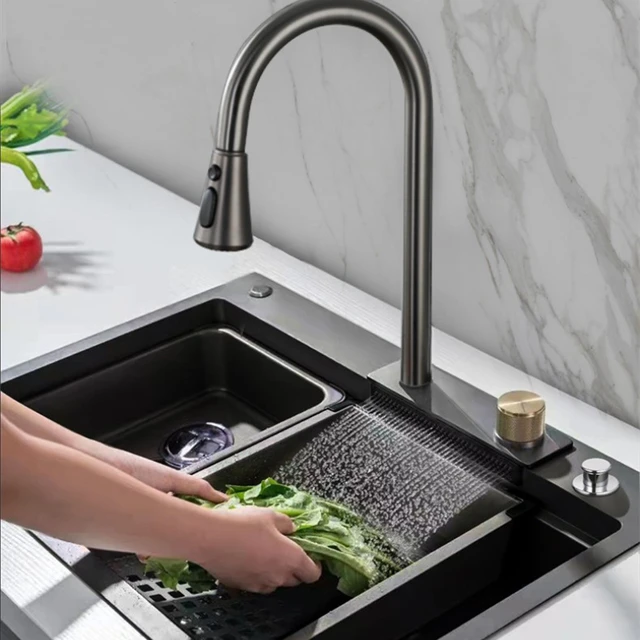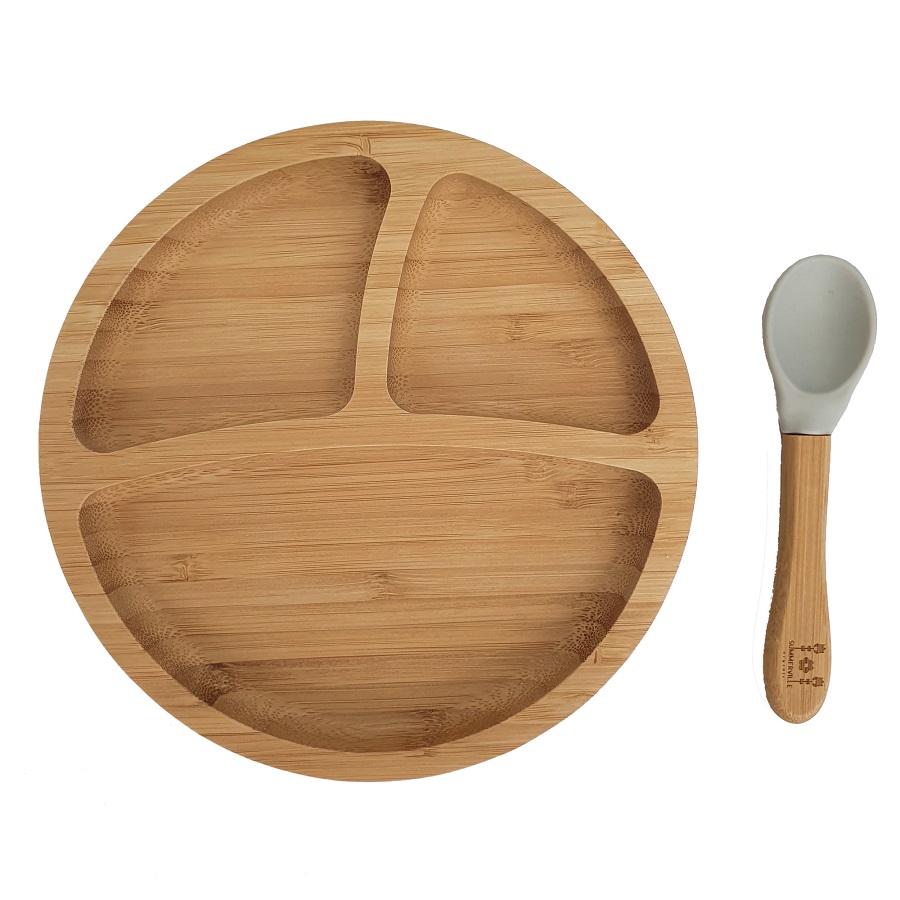 Introduction:
Introduction:
A foul odor coming from the kitchen sink can be unpleasant and bothersome. If you’re wondering why your kitchen sink smells, it’s essential to identify the underlying causes and address them effectively. In this comprehensive guide, we will explore the reasons behind a smelly kitchen sink and provide simple solutions to eliminate the odors. By understanding the common culprits and implementing proper cleaning and maintenance practices, you can enjoy a fresh and odor-free kitchen sink.
Introduction to Kitchen Sink Odors
Kitchen sink odors can arise due to various factors, such as food particles, grease, and bacterial growth.
A. Importance of Identifying Odors: Recognizing the source of the odor will help determine the appropriate solution.
B. Odor Spread: The unpleasant smells may originate from the drain, the garbage disposal, or even the sink itself.
 Some common types of kitchen sinks:
Some common types of kitchen sinks:
There are several types of kitchen sinks available, each with its own design and functionality. Here are some common types of kitchen sinks:
Single Bowl Sink:
Single bowl sinks have one large, deep basin. They provide ample space for washing larger pots and pans and are ideal for kitchens with limited counter space.
Double Bowl Sink:
Double bowl sinks feature two separate basins of equal size. These sinks allow for multitasking, such as washing dishes in one bowl while using the other for food preparation. They are popular in larger kitchens or for households that require separate areas for different tasks.
Farmhouse Sink:
Farmhouse sinks, also known as apron front sinks, have a deep basin and a protruding front panel that adds a rustic and charming aesthetic. These sinks are a popular choice for farmhouse-style kitchens.
Undermount Sink:
Undermount sinks are installed beneath the countertop, creating a seamless and sleek look. They offer more counter space and are easier to clean since there is no lip or edge to catch crumbs or debris.
Drop-in Sink:
Drop-in sinks, also called top-mount or self-rimming sinks, are the most common type of sink. They have a visible rim that rests on the countertop and are easy to install and replace.
Stainless Steel Sink:
Stainless steel sinks are durable, easy to clean, and resistant to stains and heat. They are a popular choice for commercial kitchens and households that prefer a modern and industrial look.
Composite Sink:
Composite sinks are made from a blend of materials, typically a mix of granite or quartz with resin. They are heat-resistant, scratch-resistant, and offer a wide range of colors and designs.
Bar Sink/Prep Sink:
Bar sinks or prep sinks are smaller-sized sinks often installed in a bar area or an island for food and drink preparation. These sinks are convenient for washing glasses or cutting ingredients while keeping the main sink free.
These are just a few examples of the types of kitchen sinks available. It’s important to consider your needs, kitchen layout, and desired style when selecting the right type of sink for your kitchen.
 Accumulated Food Debris
Accumulated Food Debris
Food particles and debris can accumulate in the kitchen sink, leading to unpleasant odors.
A. Clean Out the Sink: Remove any visible food debris and clean the sink thoroughly with dish soap and warm water.
B. Use a Sink Strainer: Install a sink strainer to catch food particles and prevent them from going down the drain.
Bacterial Growth in the Drain
Bacterial growth in the drain can contribute to foul odors emanating from your kitchen sink.
A. Natural Remedies: Pour boiling water down the drain to help kill bacteria and remove odors naturally. Alternatively, use a mixture of baking soda and vinegar to create a fizzy solution that can clean and deodorize the drain.
B. Commercial Drain Cleaners: If natural remedies are ineffective, use a commercial drain cleaner following the manufacturer’s instructions to eliminate bacteria and odors.
Grease Buildup
Accumulated grease in the drains or pipes can result in unpleasant smells in the kitchen sink.
A. Hot Water and Dish Soap: Run hot water along with dish soap down the drain to dissolve and remove grease buildup.
B. Grease-Disposing Alternatives: Avoid pouring grease down the drain and instead dispose of it in a separate container.
Clogged or Dirty Garbage Disposal
A clogged or dirty garbage disposal can be a breeding ground for bacteria and cause odors in the kitchen sink.
A. Regular Cleaning: Clean the garbage disposal by grinding ice cubes and citrus peels, followed by flushing it with cold water.
B. Disposal Cleaner: Use a commercial garbage disposal cleaner according to the manufacturer’s instructions to remove buildup and eliminate odors.
 Sewer Line Issues
Sewer Line Issues
Foul odors in the kitchen sink can sometimes be a sign of sewer line problems.
A. Professional Inspection: If persistent odors cannot be eliminated using household remedies, contact a professional plumber to inspect the sewer line for any issues.
Regular Cleaning and Maintenance
Implement regular cleaning and maintenance practices to prevent odors in the kitchen sink.
A. Routine Cleaning: Clean the sink, drain, and garbage disposal regularly to prevent bacteria and odor buildup.
B. Vinegar and Baking Soda: Use a mixture of vinegar and baking soda every few weeks to maintain a fresh and odor-free sink.
Pairing a kitchen sink with a faucet:
When it comes to pairing a kitchen sink with a faucet, there are a few considerations to keep in mind:
Mounting Compatibility:
Ensure that the faucet you choose is compatible with the type of sink you have or plan to install. For example, if you have a top-mount or drop-in sink, make sure the faucet is designed to be mounted on the sink deck. If you have an undermount sink, consider a faucet that can be mounted on the countertop or wall.
Sink Configuration:
Take into account the number of faucet holes available in your sink. Some sinks have pre-drilled holes for single-handle or double-handle faucets, while others may require a separate sprayer or soap dispenser. Choose a faucet that matches the number and configuration of the existing or desired holes in your sink.
Style and Design:
Consider the overall aesthetic of your kitchen and select a faucet that complements the sink and other fixtures. Whether you prefer a traditional, modern, or industrial look, there are various faucet designs, finishes, and handle types available to match your style.
Handle Configuration:
Decide whether you prefer a single-handle or double-handle faucet. Single-handle faucets offer convenience and ease of use, allowing you to control both water temperature and flow with one hand. Double-handle faucets provide separate handles for hot and cold water, offering precise temperature control.
Material and Finish:
Ensure that the faucet’s material and finish correspond to the sink and other kitchen hardware. Common faucet materials include stainless steel, chrome, brass, and bronze, each with its own appearance, durability, and maintenance requirements.
Functionality and Features:
Consider the features you desire in a faucet, such as pull-down or pull-out sprayers, high-arc spouts for extra clearance, or touchless technology for hands-free operation. Choose a faucet that aligns with your specific needs and preferred functionality.
Ultimately, the pairing of a kitchen sink and faucet should not only be visually appealing but also functional and compatible. It is crucial to carefully consider the sink’s specifications, your desired style, and the functionality features of the faucet to ensure a harmonious and practical match in your kitchen.
 Conclusion
Conclusion
Smelly kitchen sink odors can be resolved by identifying the causes and implementing appropriate solutions. Whether it’s accumulated food debris, bacterial growth, grease buildup, or a dirty garbage disposal, taking proper cleaning and maintenance measures will eliminate the foul odors. Regularly clean the sink, drain, and garbage disposal, use natural remedies or commercial cleaners when necessary, and dispose of grease properly. If persistent odors persist, it may be necessary to seek professional assistance to address any underlying sewer line issues. With consistent efforts and good hygiene practices, you can enjoy a fresh and pleasant-smelling kitchen sink.



